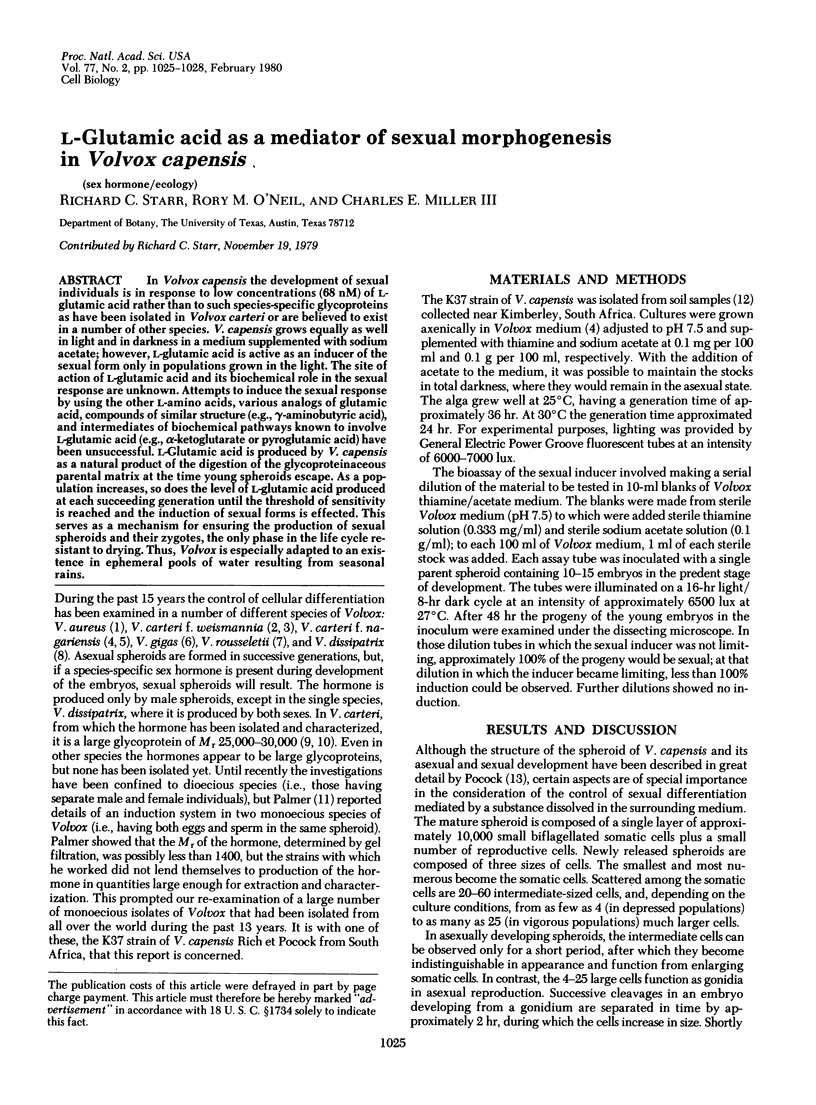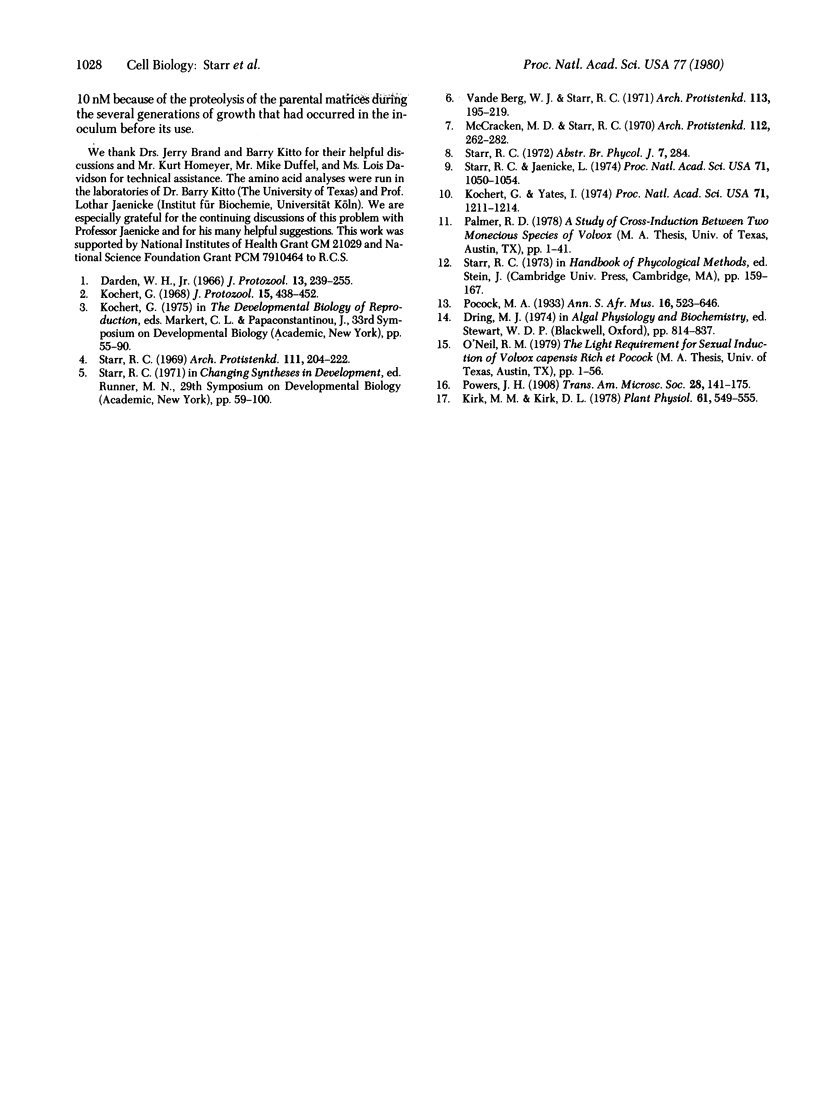Abstract
In Volvox capensis the development of sexual individuals is in response to low concentrations (68 nM) of L-glutamic acid rather than to such species-specific glycoproteins as have been isolated in Volvox carteri or are believed to exist in a number of other species. V. capensis grows equally as well in light and in darkness in a medium supplemented with sodium acetate; however, L-glutamic acid is active as an inducer of the sexual form only in populations grown in the light. The site of action of L-glutamic acid and its biochemical role in the sexual response are unknown. Attempts to induce the sexual response by using the other L-amino acids, various analogs of glutamic acid, compounds of similar structure (e.g., γ-aminobutyric acid), and intermediates of biochemical pathways known to involve L-glutamic acid (e.g., α-ketoglutarate or pyroglutamic acid) have been unsuccessful. L-Glutamic acid is produced by V. capensis as a natural product of the digestion of the glycoproteinaceous parental matrix at the time young spheroids escape. As a population increases, so does the level of L-glutamic acid produced at each succeeding generation until the threshold of sensitivity is reached and the induction of sexual forms is effected. This serves as a mechanism for ensuring the production of sexual spheroids and their zygotes, the only phase in the life cycle resistant to drying. Thus, Volvox is especially adapted to an existence in ephemeral pools of water resulting from seasonal rains.
Keywords: sex hormone, ecology
Full text
PDF



Selected References
These references are in PubMed. This may not be the complete list of references from this article.
- Darden W. H., Jr Sexual differentiation in Volvox aureus. J Protozool. 1966 May;13(2):239–255. doi: 10.1111/j.1550-7408.1966.tb01901.x. [DOI] [PubMed] [Google Scholar]
- Kirk M. M., Kirk D. L. Carrier-mediated Uptake of Arginine and Urea by Volvox carteri f. nagariensis. Plant Physiol. 1978 Apr;61(4):549–555. doi: 10.1104/pp.61.4.549. [DOI] [PMC free article] [PubMed] [Google Scholar]
- Kochert G. Differentiation of reproductive cells in Volvox carteri. J Protozool. 1968 Aug;15(3):438–452. doi: 10.1111/j.1550-7408.1968.tb02154.x. [DOI] [PubMed] [Google Scholar]
- Kochert G., Yates I. Purification and partial characterization of a glycoprotein sexual inducer from Volvox carteri. Proc Natl Acad Sci U S A. 1974 Apr;71(4):1211–1214. doi: 10.1073/pnas.71.4.1211. [DOI] [PMC free article] [PubMed] [Google Scholar]
- Starr R. C., Jaenicke L. Purification and characterization of the hormone initiating sexual morphogenesis in Volvox carteri f. nagariensis Iyengar. Proc Natl Acad Sci U S A. 1974 Apr;71(4):1050–1054. doi: 10.1073/pnas.71.4.1050. [DOI] [PMC free article] [PubMed] [Google Scholar]


